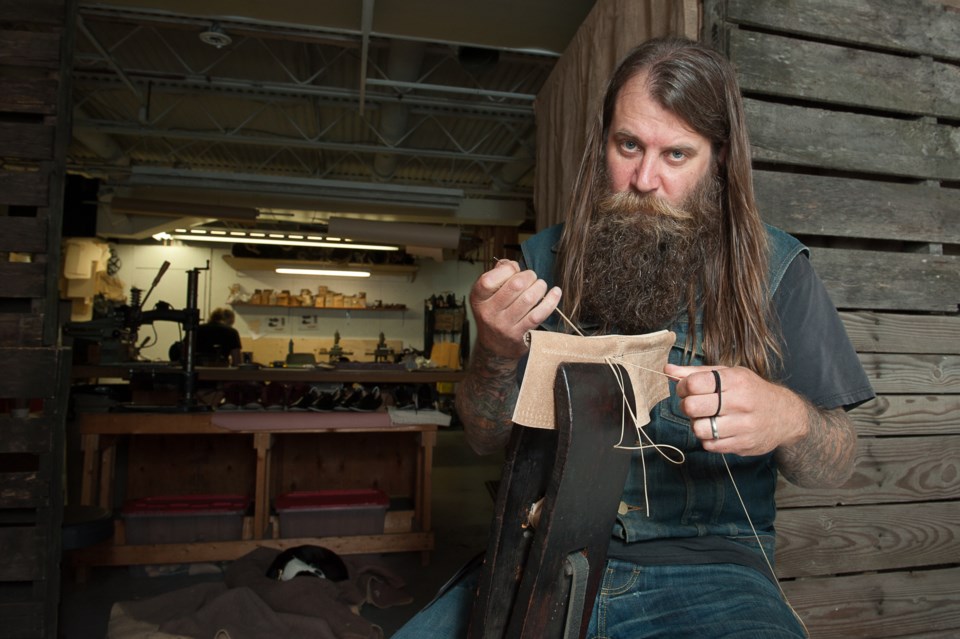If Vancouver is a creative ocean, East Vancouver is the reef. Within its ecosystem are all manner of dazzling creatures, some so rare you have to know in which corners to look; others so well established that they have helped support creative life for decades.
Built upon a backbone of commercial properties with unconventional landlords and leasees, and an innate capacity to produce, East Vancouver is teeming with the arts.
So we dove into six innovative studios that lure the eye, all with a footprint firmly rooted in the neighborhood.
Shawn Hunt
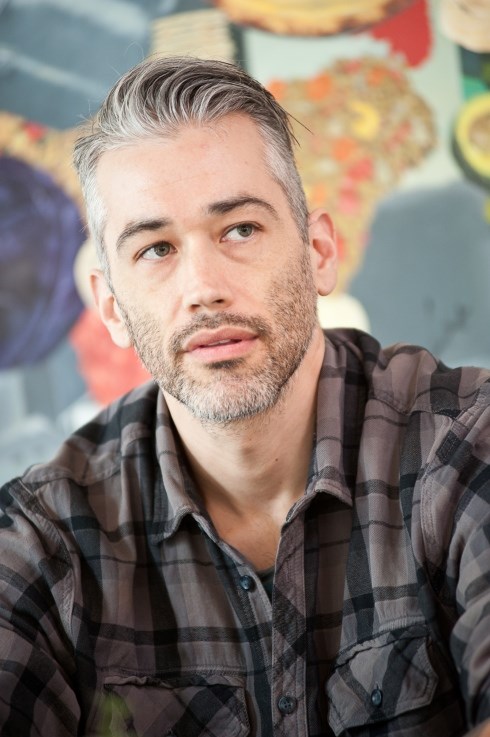
Shawn Hunt moved to Vancouver to become a better painter. With a childhood spent carving with his father on the Sunshine Coast, the Heiltsuk artist was quick to return after graduating from UBC, and it was there that he launched his acclaimed 14-year career as a sculptor and jewelry maker.
Close ties to his family and a comfortable set of studios kept him away from Vancouver, but when First Nations artist and activist Lawrence Paul Yuxweluptun opened his space on East 7th last year, Hunt took the unmissable opportunity to study painting next to a man who, over the past three decades, has created an entire counter-narrative to Canadian art history.
“When you’re working in the traditional sense, [ours] can be quite a constrained, reserved art form,” Hunt says, staring out the window of Gene Café at a rain-soaked Kingsway Street. “[Yuxweluptun] has always been a bit of an outsider, really, in terms of the traditional native art world. I think that’s what drew me to him and why we connected, because I’ve always felt like a bit of an outsider as well. To find somebody who thought the same way was really exciting.”
His grin makes good on its threat to surface.
“And you sort of feel a little bit stronger when you’re in a gang. Just having him allowed me to experiment further and feel a little bit safer – that someone had my back.”
LPY Studios indeed has the feel of a clubhouse; one built in a concrete forest where days are wiled away in studied brush strokes and dialogues around appropriation, colonization, and art.
“I think it’s quite well known that the modernist artists were inspired by indigenous arts of the world,” says Hunt. “I find that indigenous cultures, especially my culture in general, has been appropriated quite extensively and continues to be appropriated quite extensively, so I often like to muddle the water even more. I’ll scoop up that appropriation and re-appropriate it.”
Hunt’s fusion of his European and Canadian First Nations heritage has always had the ability to draw crowds and incite thought (one just had to witness his summer Artifake exhibition featuring staid totem poles with floppy stuffed animals perched on top to become a lifelong fan), but there’s no room for clichés to creep between the strident colouring and the multiple dimensions of his latest series.
“This one is called ‘Soft Self-Portrait of Dali with Carving Knife’, based on a Salvador Dali self-portrait he did called ‘Soft Self-Portrait with Bacon’.”
He pauses to let that sink in.
Gauguin, Magritte, Picasso, Dali – the modernists who were known to have been highly influenced by First Nations artworks – have all had their self-portraits “stolen” by Hunt.
“Maybe people would prefer that I do eagles and ravens and things like that, and I think they would sell really easily, [but] that probably makes me not do them.
"I like the challenge,” he says confidently.
Ken Diamond
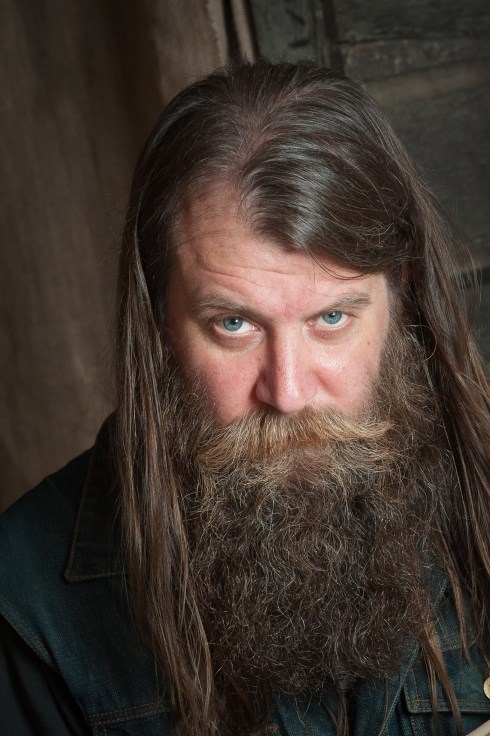
If the path seems well trod, it was Ken Diamond who walked it. At least when it comes to leather in this town. Diamond cottoned on to the dying art of leatherwork in the late ‘90s and has been hand-making artisan moccasins and accessories in East Vancouver ever since.
Much like how he discovered the medium (during a brief stint in the film and theatre industries that he doesn’t like to talk about), he fell into the type of footwear randomly.
“They literally happened by accident, just like everything else,” he says taciturnly. “Just decided to get a pattern and change it and then they got some notice… So we started making them more.”
If the interview had ended there, Diamond might have been guilty of acting a bit like an ogre. But a few minutes later, as he gets going about his fish-out-of-water experience with DIY markets almost a decade ago, his mood inexplicably lifts, and suddenly he’s laughing as his engaging wife and studio sidekick Marla eggs him on.
Together they work long, hard hours – fingers taped – taking entire days to hand-stitch pieces of leather into something beautiful.
Sitting around the front room of the small, three-person-and-a-dog studio, with an entire wall dedicated to Diamond’s most treasured collectibles, its evident that 756 Powell is their second home.
Eventually, the couple says they want the Sunshine Coast to be their domestic retreat, but for now, East Vancouver will do. Whatever space isn’t taken up with vintage leather-cutting machines, wooden work benches, and weathered third hands has been given over to their friends. An unholy noise briefly fills the space as “Grinderman” fires up the obvious, and Diamond explains that he rents out the back half of the building to some of his buddies to work on their bikes.
This is all before they get to talking about the moccasins – this season’s black, tan, and oxblood offerings, with charming names like Koko, Lowbowski, and Mona (after their pup), sitting enticingly on the other side of the room.
For years the store operated by appointment only. The couple converted it into a partial retail space four months ago, and are having their soft open tonight (Sept. 25). If you’re walking by, which, they say, more and more people seem to be doing each year, you should stop in between 4 and 9pm.
And if the question of appropriation and moccasins arises in the mind, as it has on only one occasion according to Diamond, there was an opportunity to grab Shawn Hunt’s point of view.
Hunt owns two pairs of Diamonds, saying that he initially felt one way, but then reconsidered: “It’s a technology, and it’s been around forever,” Hunt explains. “How can you not appropriate something that works?”
Niels Bendtsen
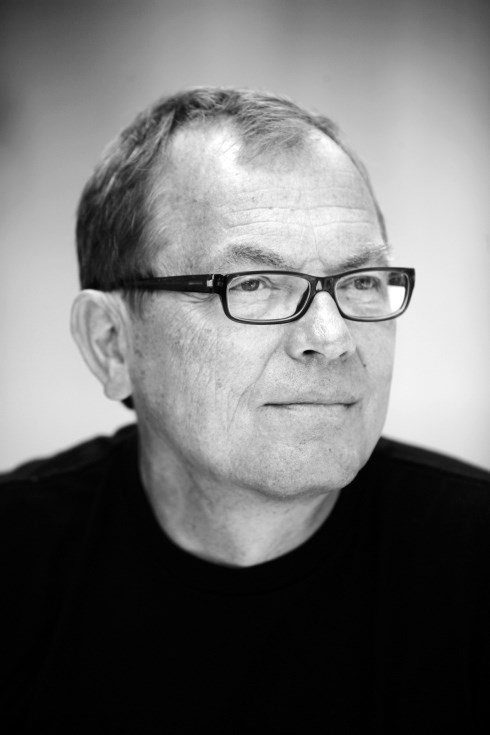
The only indication that Niels Bendtsen is the one in charge is that his desk is the furthest from the door.
No dividers or office walls block the flow of business in the hushed, high-ceilinged space above Inform’s Railtown location. A staff member welcomes with a whisper and points to the imposing Danish man seated at the back of the room.
Sketches spill across his desk blotter and a scattering of coloured pens surround an open packet of felt markers.
“It’s not always that I get the chance,” he says of the drawings, “but that’s what I like doing. And I guess why we exist a little bit.
“It’s one way of satisfying my need to design furniture.”
Bendtsen emigrated to Canada with his parents in 1951, at the age of eight. By 1963, he had opened his first store, where he sold his father’s furniture and other pieces from Scandinavia. In 1972, he sold the store and moved to Denmark to work as a designer. It was during this time that he designed his iconic Ribbon Chair, which earned a place in the MoMA’s permanent collection.
When he moved back to Vancouver in the ‘80s, Bendtsen encountered what designers in the isolated western outpost still face: There were virtually no factories here to further his vision. So he created his own.
“It’s a big challenge being here because we have to get a lot of stuff in from Europe all the time. Especially in manufacturing. In Europe most of them have suppliers around the corner. We don’t have that luxury.”
Between his showrooms, the factory, and his office team, Bendtsen employs 150 people, and has supported countless other local designers through Inform, the retail business he owns with his wife Nancy.
And, personally, Bendtsen has had career highlights so bright they make the eyes squint, including the Poang chair (of which Ikea has sold 50 million units), and designing stools for Starbucks in the ‘90s. In his 50-year career, the veteran designer has borne witness to every micro and macro cycle in the industry, from the global rise, fall, and resurgence of contemporary design, to shifting seat heights as consumers imply with their wallets that they don’t want to sit on the ground anymore.
He is currently observing the Railtown tech boom that threatens to oust many of his creative neighbors.
“It’s not going to be an artistic street for very long,” he predicts. “Rents are going up and it’s not an easy thing to afford.”
Bendtsen is unapologetic, however, as he talks about gentrification; even of the artist on artist variety. It was, after all, his purchase of the Railway Street space that pushed a number of artists into the studio warren that is 1000 Parker Street.
“It was an artist co-op when I bought it, so there was, like, 16 million rooms in here. A fire trap,” he recalls. “I’m quite socialistic but this whole idea that you’re not allowed to fix things and keep them in good order is ridiculous. Why does a broken window seem more exciting than one that’s in one piece?”
Christian Woo
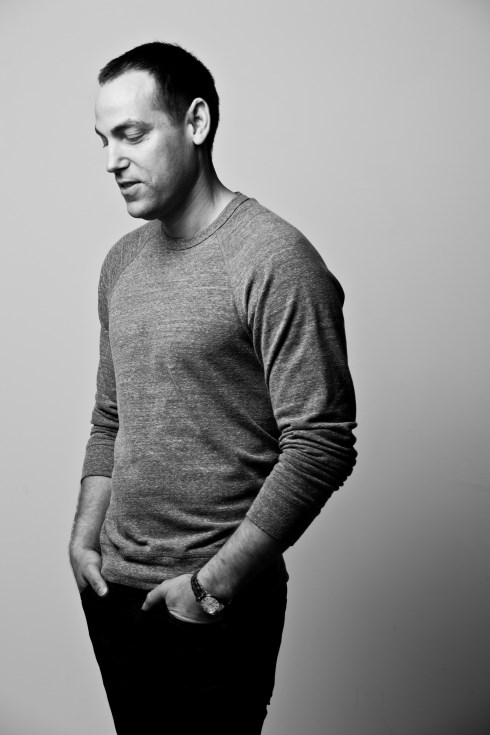
As Vancouver’s Interior Design Show West celebrates its 10th anniversary this weekend, its impact has already been registered, like a ring of water on a hardwood table, indelibly on the careers of many of Vancouver’s most promising young makers.
Furniture designer Christian Woo, for example, is not only a long-standing and much-lauded exhibitor at the interior design show, but a beneficiary of its mentoring network.
“IDSwest was a great benefit to me starting out, and I still am participating,” says Woo, who was selected in 2009 to take part in Working Wood – an eight-month mentoring program coordinated by former IDSwest director Jason Heard. “It’s all about relationships. As far as the city goes it’s probably the best platform for that.”
Retailers have also played a pivotal role in Woo’s development, with the designer referencing the support of Provide early on, and now Inform in Gastown.
Woo started his namesake business in 2006 and has since grown out of the enclave at 1000 Parker Street into his own 2,000-sq.ft. incubator, which works on large-scale interior projects and a boutique production furniture line.
“It’s just one of those things, you’re newly self-employed and you just work your ass off, don’t you,” he says earnestly of his success. “When you’re first starting a business you never know where the clients are going to come from or where the next job will come from, but while you’re working and developing, hopefully you don’t have too much time to stress about those things.”
Woo says he averages one to two new designs a year, and it’s only now that his small collection of Forestry Stewardship Council-approved nesting tables, low-profile beds, and cantilevered long tables is ready to reach outside of Vancouver.
A study in contrasts, the Spanish-born designer’s minimalism is rooted in Japanese and Scandinavian design, but Woo says the scale and proportion of his work represents the rugged West Coast.
His precision, on the other hand, is all his grandfather.
“I was helping my brother renovate his house years ago,” Woo recalls, “and we were putting down the sub floor that goes underneath the tiles. Nobody would ever see the subfloor, right? So I was screwing pieces down and there was a gap of about an eighth of an inch.”
Woo’s grandfather chose that moment to come up behind him and call him out on the fit. As Woo argued that it wasn’t worth fixing, the elder Scotsman just stoically shook his head.
“I was so pissed off with that,” Woo says, “but in hindsight, he was old-school. Even if nobody sees it, that was not a perfect fit. You can care all the way through if you want to. You have to decide if it really matters or not.”
Lukas Peet
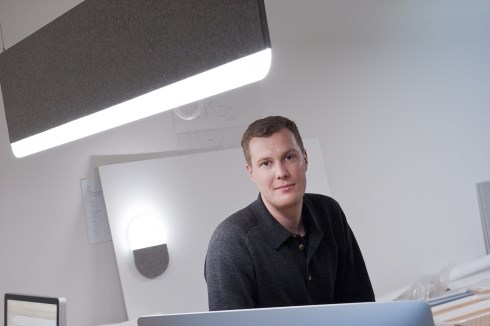
Lukas Peet is pressed for time. He’s due shortly to travel from his Powell Street studio to Richmond to accept a Western Living Designer of the Year award.
It’s his second of such stature (Peet was selected in December by a panel of judges, including Omer Arbel and Douglas Coupland, as the winner of the Design Exchange’s Emerging Designer Competition in Toronto), and likely only the beginning of a cabinet-worthy collection.
Born in Calgary, Peet got his hands on elements of design early, with the support of his jeweller father. At 18, he left to study industrial design at the prestigious Design Academy Eindhoven in Holland (a school whose graduation shows attract five-figure crowds marked with scouts from design megalodons like Ikea) and returned to Canada in 2009.
The 27-year-old lighting designer is just about to launch his new creative agency, Andlight, with friends Caine Heintzman and Matt Davis. Together, the three comprise a space bursting with prototypes, dummy lights, and production materials.
In fact, only metres from where they design the sculptural LED lights, they also assemble them.
“Andlight is definitely focused on lighting,” Heintzman says wryly. “But we’re not saying no to other opportunities,” leaving the door open for expansion into Andobjects, Andfurniture, and more.
Peet’s Button Light – part of the début Andlight collection – can already be seen at the new Kit & Ace flagship in Gastown, but Andlight won’t have its official launch until Nov. 13 at Inform.
The offerings are enticingly fresh, tactile, modular, and versatile.
The Slab Light for example, a wide swath of die-cut felt and custom-LED-lit acrylic, mirrors the slim frame of the iMac it illuminates below, the impressive lines virtually disappearing when viewed from the side.
“We’re trying to make products that last more than just a quick fad,” explains Peet. “We have a strong focus to make progressive lighting, in the sense that they’re energy efficient, environmentally conscious as far as how they’re produced, and not overly wasteful.
“In design in general, I think it has to head that way,” he continues. “It’s not that we want to be a ‘green brand’; it’s just being smarter.”
Kuh Del Rosario
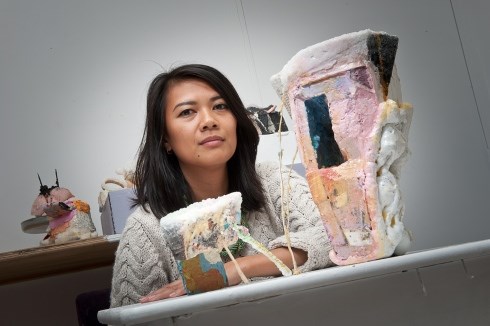
If East Vancouver is a reef, Kuh Del Rosario is a polyp, tucked in a tiny studio in the basement of a multi-story creative hub on Powell.
But the mixed-media sculptor, with her vocal following of fellow artists, has left a bigger imprint on the city than her square footage would belie.
As the former treasurer of Dynamo, she helped manage 11 studio spaces and a project space for music, film, and art events. She also collaborated on SHIP – a project that seeks out artists that have yet to be shown in Vancouver.
“I think that you have to [give back]. Especially in the city; it’s just par for the course to function in the community that you also support.”
And that extends even to her artwork. The Manila-born artist expresses a unique, sometimes uncomfortable sympathy for her urban surroundings, finding inspiration in the bits and pieces that others have thrown away.
“My work was initially inspired by the Philippines. There is an abundance of trash and urban detritus that happens in places where there’s a lot of people. It was really striking to me when I went back for the first time. It was a shock,” she recalls.
Dollar stores, Home Depot – anywhere there are stacks of single-use objects, Del Rosario will hunt.
Her studio is full of colourful collisions and, as a comment on how unnervingly biological her creations have become, Del Rosario has recently begun adding nature back into these discourses; her current series features small-statured coalesces of latex and Styrofoam, coated with microscopic Borax crystals she learned how to grow herself.
These lovable sculptures – landfill Ewoks, if you will – are for sale individually, but they also come to life in a stop-motion flip book that will be available at the upcoming Art Book Fair, Oct. 4 and 5.
Each piece retails between $60 and $95 dollars, and the creations come with names of incongruous bling that capture her shy playfulness.
“I’m naming them after high-end fashion houses like Balmain and Gucci. Just kind of winking at luxury. And maybe I’ll sell more if they’re ‘couture’!” she laughs.
kelsey@wevancouver.com

